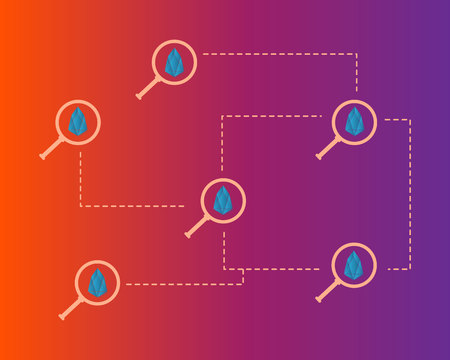1. Understanding the Customer Journey: An Indian Marketplace Perspective
When we talk about customer journey analysis in India, it’s important to recognise how unique and varied these journeys can be. Unlike Western markets, Indian customers travel through online marketplaces in ways deeply shaped by cultural diversity, multiple languages, and regional preferences. For instance, buyers from Delhi might prefer English or Hindi interfaces, while shoppers in Tamil Nadu look for Tamil language support. These differences impact every touchpoint—right from browsing products to making payments. Moreover, Indian festivals like Diwali or Holi significantly influence when and what people buy, adding more layers to their online behaviour. To really understand these patterns, businesses must use tools like heatmaps and user behaviour analytics together. This approach helps visualise exactly where users click, scroll, or drop off on a website tailored for Indian audiences. By mapping out these interactions step by step, brands can better cater to the expectations of Indian consumers who value trust (bharosa), local payment methods like UPI, and personalised offers that speak their language and culture.
2. What Are Heatmaps? Visualising User Clicks and Movements
When analysing the customer journey on your website, heatmaps are one of the most effective tools to visually understand user behaviour. A heatmap is a colour-coded representation that shows exactly where users click, scroll, or hover their mouse the most. This makes it extremely easy to identify which areas of your site attract the maximum attention and interaction.
How Heatmaps Work: Colour Coding for Clarity
Heatmaps use different colours, usually ranging from cool blues to hot reds, to indicate how frequently certain parts of your webpage are engaged with. The hotter the colour (such as red or orange), the more popular that section is among users. Areas with little or no activity appear in cooler shades like blue or green.
Types of Heatmaps Commonly Used in India
| Type of Heatmap | What It Shows | Typical Use Case |
|---|---|---|
| Click Heatmap | User clicks on web elements | Spotting popular buttons & links (e.g., “Add to Cart”) |
| Scroll Heatmap | How far users scroll down a page | Understanding if users reach important info (like offers or testimonials) |
| Move Heatmap | Mouse movement patterns | Analysing what grabs attention before clicking |
Why Heatmaps Matter for Indian Businesses
For Indian e-commerce sites, travel portals, or local service platforms, understanding these visual patterns helps you optimise layouts for better engagement. For example, if most clicks are happening near a cricket-themed banner during IPL season, you know such content resonates well with your audience.
Simplifying Customer Journey Analysis with Heatmaps
By using heatmaps alongside user behaviour tools, you get a clear picture of how visitors interact with your site’s elements—from login buttons in regional languages to festival sale banners. This enables quick decisions about design tweaks and content placement, making sure every visitor gets a seamless experience rooted in their cultural context.

3. Exploring User Behaviour Tools: Insights Beyond the Surface
When analysing the customer journey for Indian users, it is important to go beyond just seeing where they click or tap. User behaviour tools like user recording, scroll tracking, and analytics platforms offer deep insights into what your visitors are truly looking for on your website or app. Let’s understand how these tools can help decode real intentions of Indian customers and improve their digital experience.
User Recording: Watching Real Interactions
User recording tools let you watch actual sessions of users navigating your site—almost like sitting beside them as they shop or explore. For Indian businesses, this means observing unique browsing habits, such as comparing prices across tabs, switching between English and local languages, or pausing to read detailed product descriptions before making a decision. By watching these recordings, you can find out where users hesitate, where they get confused by Hinglish (Hindi + English) elements, or which steps cause them to drop off.
Scroll Tracking: Understanding Content Engagement
Indian users often access websites via mobile devices with slower internet connections. Scroll tracking helps you know how far down a page your users typically go. Are they seeing the special festive sale banner at the bottom? Or do they stop after reading reviews in their preferred language? By mapping scroll depth, you can place key information—like cash-on-delivery options or UPI payment badges—where most Indians will notice.
Analytics Tools: Turning Data into Decisions
Analytics platforms like Google Analytics or Mixpanel break down large sets of data into actionable insights. You can see which city brings more traffic, which products get more love during Diwali sales, or whether users return after seeing an ad in Hindi on social media. With these insights, Indian brands can personalise experiences—such as showing regional offers in Maharashtra or using cricket references in Tamil Nadu—to match local interests and preferences.
Together, these user behaviour tools do more than just track clicks—they help Indian brands truly understand what makes their audience tick. By combining heatmaps with deep behavioural analysis, businesses create smoother journeys that respect local habits and drive better engagement.
4. Combining Heatmaps and Behaviour Tools for Deeper Insights
When it comes to analysing your customer journey, using both heatmaps and behaviour tools together offers a complete perspective that is especially useful for Indian businesses looking to understand their audience. Let’s break down why this combination matters and how you can use these tools in harmony to make better decisions.
Why Integrate Heatmaps & Behaviour Tools?
Heatmaps show you where users click, scroll, and spend time on your site – almost like seeing “digital footprints” of your customers. On the other hand, behaviour tools (like session recordings or form analytics) let you watch real user sessions and gather data about actions such as form fills, drop-offs, or hesitations. By putting these two types of data together, you get a 360-degree view of how Indians interact with your digital platforms, be it an e-commerce store from Mumbai or a food delivery app in Bengaluru.
Key Benefits of Combining Both:
| Heatmaps | Behaviour Tools | Combined Value |
|---|---|---|
| Visualise high-traffic areas | Watch real-time user journeys | Pinpoint reasons behind popular sections |
| Identify ignored sections | Track drop-off points and confusion | Learn why certain parts are skipped by Indian users |
| See device-specific interaction (mobile vs desktop) | Capture gestures (taps, swipes) | Optimise experience for India’s mobile-first audience |
| Measure engagement with content (e.g., regional offers) | Analyse form submissions and errors | Create smoother journeys for diverse language speakers |
How to Get a 360-Degree View of Your Customer Journey
Step 1: Start with heatmaps to spot the most engaging and ignored areas on your website or app.
Step 2: Use behaviour tools to replay actual user sessions. Watch how different segments (for example: Hindi-speaking vs Tamil-speaking users) navigate and interact.
Step 3: Cross-reference findings: If a product page is popular in the heatmap but many users drop off at checkout, dig into session recordings to see if there are issues with payment gateways or address forms – something common in Indian e-commerce.
Step 4: Create action plans based on insights. For example, if North Indian users struggle with English-only forms, consider adding local language support.
Pro Tip for Indian Businesses:
The diversity of languages and devices in India means combining both tools is not just useful—it’s necessary. This approach helps you understand every little detail of your customer’s journey, making it easier to adapt your UX to different regions, festivals, or even payment preferences like UPI or Cash on Delivery.
5. Case Study: E-commerce Success Story in India
Introduction to the Indian E-commerce Scenario
The Indian e-commerce market is one of the fastest-growing in the world, with millions of users from diverse backgrounds and regions. Understanding customer journeys here requires sensitivity to local languages, regional preferences, and mobile-first behaviours. Let’s look at how an Indian online fashion retailer used heatmaps and user behaviour tools to boost conversions and create a truly desi-friendly shopping experience.
Identifying Customer Journey Roadblocks
The business noticed through analytics that many users dropped off before completing their purchases, especially on mobile devices. By deploying heatmaps, they visualised exactly where users were clicking, scrolling, or getting stuck. Session recordings revealed confusion around product sizing (with Western sizes not matching Indian expectations) and frustration with payment methods not tailored for Indian customers.
Applying Culturally Aware Strategies
The team decided to localise size charts using familiar Indian references (like “Saree Size” and “Kurta Length”) and integrated popular payment solutions such as UPI, Paytm, and Cash on Delivery—essential for trust-building among Indian shoppers. Heatmap data showed increased engagement with these features after implementation.
Boosting Engagement and Conversion Rates
With continuous monitoring using heatmaps and user journey analytics, the retailer fine-tuned their homepage banners during major festivals like Diwali and Holi. They used Hinglish (a blend of Hindi and English) in microcopy, aligning with local communication styles. As a result, bounce rates reduced by 25%, and conversion rates improved by 40% within three months.
Key Takeaways for Indian Online Businesses
This case highlights that combining heatmaps with user behaviour tools—and blending them with culturally relevant strategies—can transform the customer journey in India. For any digital business targeting Bharat’s vast audience, understanding user context is as crucial as tracking clicks or scrolls.
6. Actionable Tips: Localising Your Analysis for the Indian Audience
Understand Regional Diversity
India is a land of many languages, cultures, and digital habits. When analysing customer journeys using heatmaps and user behaviour tools, always segment your data by region or language preference. For example, observe if users from Tamil Nadu engage differently compared to those from Maharashtra. Customise your analysis dashboards to filter results by state or city for sharper insights.
Optimise for Mobile-First Behaviour
Most Indian users access websites via smartphones. Use heatmaps specifically on mobile layouts, and track gestures like tap, swipe, and scroll depth. This will help you understand which parts of your mobile site are hot spots and which need improvement. Always check if key CTAs (Call-to-Actions) are visible above the fold on popular Indian devices like Xiaomi, Samsung, and Realme.
Respect Local Preferences in Content
Many Indians prefer content in their regional language or Hinglish (Hindi-English mix). While analysing session recordings, observe drop-off points that may be related to language confusion or lack of local context. Use this insight to recommend adding language switchers or culturally familiar images and symbols in banners and navigation menus.
Analyse Payment Journey & Trust Signals
Trust is crucial for Indian shoppers, especially during payments. Use user behaviour tools to study how visitors interact with payment options such as UPI, Paytm, PhonePe, and Cash on Delivery (COD). Add heatmaps to payment pages to see if users hesitate at any step—perhaps they’re looking for security badges or refund information. Highlight these trust signals prominently based on your findings.
Incorporate Festival & Seasonal Trends
Indians love shopping during festivals like Diwali, Holi, and Eid. While analysing user journeys around these periods, use heatmaps to see which festive offers attract more clicks or attention. Adapt landing pages and banners to match festival themes and track if these changes boost engagement through your analytics tools.
Quick Checklist for Indian Context:
- Segment analysis by region/language
- Test on budget smartphones and slower networks
- Highlight local payment methods & trust badges
- Use festival-based A/B testing
- Collect feedback in multiple languages
By following these tips, you can make your customer journey analysis truly resonate with Indian web users—helping you optimise conversions and build stronger relationships in this vibrant market.


